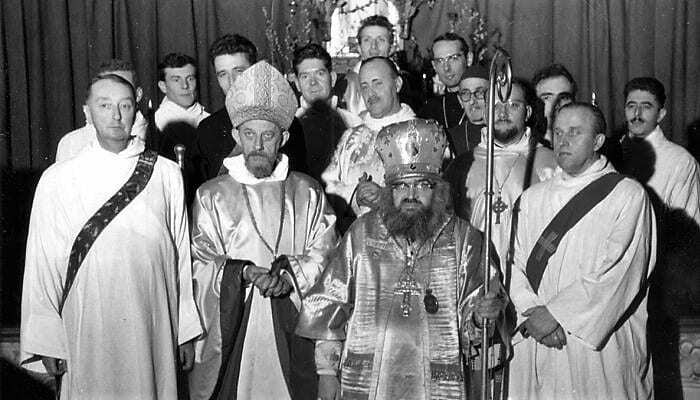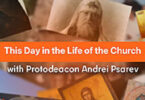Bishop Evgraph (Kovalevsky) was consecrated on this day in San Francisco in 1964.
Most of the people I interact with are Church people – to be more precise, people in the Russian Church Abroad. I know almost none of them who would likely appreciate the Western liturgical rite within the Russian Orthodox Church Outside of Russia. Most Orthodox churches in North America do not follow any Western rites, and the vast majority of prospective converts have no choice but the Byzantine one. However, the ROCOR, as does the Antiochian Archdiocese, offers such a choice. It is also significant that such spiritual giants as St. John of Shanghai and Metropolitan Hilarion (Kapral), of blessed memory, the first hierarch of the Russian Church Abroad, actively supported the development of the Western Rite.
So, what is the “Western Rite”? This is an attempt to reconstruct the Western liturgical tradition of the first millennium when both churches in the East and in the West existed in unity.
I admit that I do not know much about Western rite in the ROCOR due to my lack of direct experience with it. There are conferences about it, and even an online seminary specifically for it. At the last Council of Bishops in September 2022, a report was given about the current status of Western Rite communities by Fr. Mark Rowe, Vicar-General of the Western Rite Communities.
Both St. John and Vladyka Hilarion wished for everyone to be saved, and because of that, they had a lot of patience with those who joined the Orthodoxy through this “door”.
A while ago, I interviewed Dr. Dana Miller, a Jordanville seminary classmate of both the future Metropolitan Hilarion and Mitered Archpriest Victor Potapov. Dr. Miller’s first encounter with Orthodoxy was in the 1960s through the Orthodox Church of France. This is what he shared about visiting the Church of Bishop Jean-Nectaire (Kovalevsky) of Saint-Denis:
“(..) the whole Church was very strange. I mean, strange for me now when I look back on it. I didn’t really understand anything then, but they had a Black Madonna, a statue. They had a number of things for the Catholics, and then a number of what we would recognize as Orthodox icons. It was a mixture of Catholicism and Orthodoxy. I didn’t know anything about Catholicism or Orthodoxy, so it didn’t really seem out of place to me. It was a curious blend, and it was intentional.”
Kovalevsky belonged to the Moscow Patriarchate group in France and was ordained a priest by Metropolitan Elevferii of Lithuania (d. 1940). Metropolitan Anthony (Bloom), an exarch of Moscow Patriarchate in Western Europe (1963–1974), knew Kovalevsky for many years and described him as a fantasist.
In 1960, his mission in France left Metropolitan Vladimir (Paris Exarchate) and joined the Russian Church Abroad via St. John of Shanghai. The ROCOR Synod wanted to ensure that the practices of Fr. Evgraph’s group corresponded to standard Orthodox norms. Responding to a question on administering communion to Roman Catholics, Kovalevsky, at the 1962 Council of Bishops, explained that they were doing this “because in France only twenty-five percent of the population practiced Christianity and only fifty percent were baptized. The Church left them behind. They are searching. They are baptized, chrismated, and are seeking the truth, coming to our churches. It is a shame that for a 1000 years, we did not care about them.”
In 1966, St. John passed away, and Bishop Evrgraph left the ROCOR for the Romanian Patriarchate the following year. His story can be studied alongside the story of Bishop Bishop Jacob (Akkersdijk), about whom I wrote on September 19, a vicar bishop of St. John who left the ROCOR in 1971 for the Moscow Patriarchate.
Relevant Links:
“On the Western Liturgical Traditions,” Historical Studies of the Russian Church Abroad
Bishop Jerome, “On the Western Rite in the Russian Church Abroad”, Historical Studies of the Russian Church Abroad
“Western Rite: A Failed Missionary Attempt?” Historical Studies of the Russian Church Abroad











